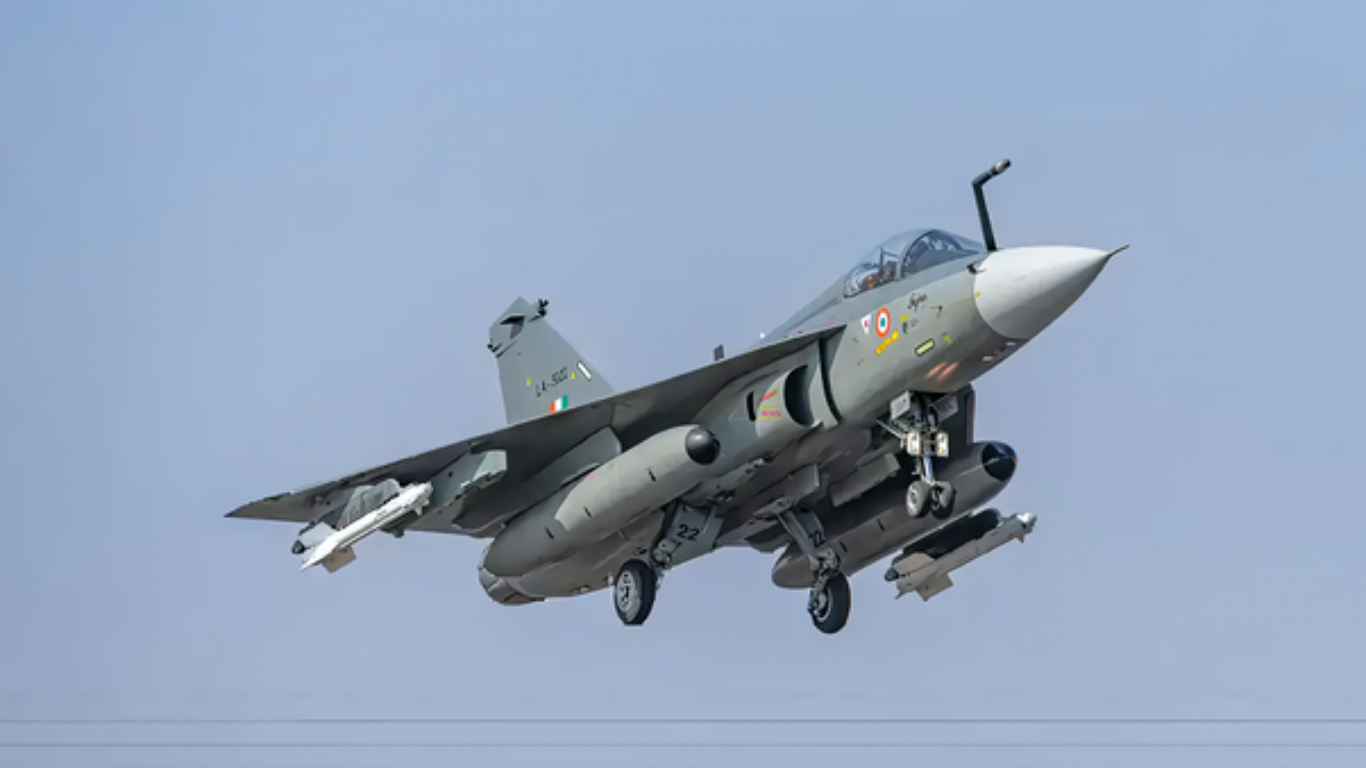India’s indigenous fighter jet program marked a significant milestone on March 28 this year as the Tejas MK1A, the advanced iteration of the MK1, completed its maiden successful test flight. This achievement not only signifies a historic moment in India’s aviation development but also heralds a new era of advanced aerial capabilities for the Indian Air Force (IAF).
The Light Combat Aircraft (LCA) program, conceptualized in the late 1980s with the aim to modernize and replace aging fleets of MiG-21s and Su-7s, gained momentum in the late 90s. January 4, 2001, witnessed a pivotal event with the inaugural flight of the Technology Demonstrator-1 (TD-1), subsequently renamed ‘Tejas’, marking a significant stride in India’s aerospace endeavors.
The Tejas journey continued with the Second Series Production (SP2) Tejas achieving initial operational clearance in 2016. The induction of the Tejas MK1 into the Air Force’s No. 45 Squadron (‘The Flying Daggers’) was followed by the operational deployment of another variant, MK1, by No. 18 Squadron (‘The Flying Bullets’).
Distinguishing Features of Tejas MK1A:
The Indian Air Force’s procurement of 83 Tejas MK1A variants in a deal worth ₹36,468 crore with Hindustan Aeronautics Limited underscores a commitment to bolstering indigenous defense capabilities. Moreover, a subsequent clearance by the Defence Acquisition Council for an additional 97 Tejas jets further solidifies this intent.
Group Captain K K Venugopal (Retired), a test pilot, orchestrated the historic maiden flight of the Tejas MK1A on March 28, marking a momentous occasion in the aircraft’s developmental journey. Group Captain Sunit Krishna, a test pilot of the LCA Tejas MK1, emphasized the imperative of technological evolution to ensure the aircraft’s relevance over the next three decades.
The Tejas MK1A integrates an array of advanced systems including a new AESA radar, enhanced electronic warfare capabilities, and a revamped mission computer, embodying a future-ready platform. Notably, the indigenous content of the MK1A surpasses its predecessor by nearly 50%, with over 40 improvements enhancing its operational efficacy.
READ MORE: What Is The 10-Year Blue Resident Visa Launched By The UAE For Environmental Advocates, And How Can One Apply For It?
Key Technological Advancements:
The introduction of the Israel EL/M-2025 AESA Radar, soon to be succeeded by the indigenous Uttam AESA Radar, heralds a paradigm shift in aerial reconnaissance capabilities. The Uttam Radar’s ability to track multiple targets within a range exceeding 200 km ensures comprehensive situational awareness, laying the foundation for subsequent variants like the Tejas MK2 and the Twin Engine Deck-Based Fighters (TEDBF).
Moreover, enhancements in aerodynamics and canopy design contribute to heightened maneuverability and situational awareness, augmenting the aircraft’s combat effectiveness. With approximately nine hard points for munitions attachment, including advanced missiles and self-protection jammers, the Tejas MK1A emerges as a versatile combat platform adaptable to diverse operational scenarios.
The integration of a digital fly-by-wire flight control computer signifies a leap in flight control systems, enhancing responsiveness and precision in airborne operations. This technological leap underscores India’s prowess in avionics development and underscores its commitment to self-reliance in defense manufacturing.
Operational Implications:
The Tejas MK1A’s advanced electronic warfare suite, comprising Radar Warning Receiver (RWR) systems and Advanced Self Protection Jammer (ASPJ) pods, reinforces its survivability against diverse threats ranging from ground-based acquisition radars to airborne multimode radars. This comprehensive defensive mechanism ensures mission success in hostile environments, reaffirming the aircraft’s combat readiness.
Furthermore, the Tejas’s compact dimensions and extensive use of composite structures endow it with unmatched agility and maneuverability, conferring a tactical advantage in aerial engagements. Its versatility to perform various roles including ground attack, interception, and air defense positions it as a formidable asset in India’s aerial arsenal.
Future Prospects:
The impending deployment of the Tejas MK1A squadron at the Nal air base signifies a strategic shift in India’s defense posture, with indigenous platforms assuming pivotal roles in safeguarding national interests. As the Tejas series progressively replaces aging fleets of MiG-21s, MiG-29s, and SEPECAT Jaguars, it reinforces India’s commitment to modernizing its air force capabilities.
Global Interest and Flight Safety:
The international interest expressed by nations like Nigeria, Philippines, Argentina, and Egypt underscores the global recognition of India’s indigenous aerospace capabilities. Despite a recent incident in March, wherein a Tejas aircraft from the No.18 squadron crashed in Rajasthan, the program boasts an exemplary flight safety record over its 23-year history, demonstrating robust engineering and operational standards.
The successful test flight of the Tejas MK1A epitomizes India’s journey towards self-reliance in aerospace technology, underscoring its emergence as a formidable player in the global defense arena. As the Tejas series continues to evolve, it not only bolsters India’s defense capabilities but also serves as a testament to the nation’s technological prowess and commitment to innovation in defense manufacturing.
READ MORE : Medical Negligence On Four-Year-Old Girl Leads To Operation On Tongue Instead Of Finger















